生まれたばかりの赤ちゃんの小さな寝顔を見つめていると、この子の未来が健やかで幸せなものであってほしいと、誰もが心から願うことでしょう。その大切な願いを形にする日本の美しい伝統行事が「お宮参り」です。しかし、いざ準備を始めると、「いつ、どこで、何を着て、どうすればいいの?」と、次から次へと疑問が湧いてくるかもしれません。
- 神様への報告だけじゃない、お宮参りに込められた深い意味とは
- 男の子は31日目?女の子は33日目?服装と時期の伝統と現代のアレンジ
- のし袋の書き方から当日の流れまで、後悔しないための完璧マナー
お宮参りの心:誕生を感謝し未来を祈る
お宮参りは、単なる儀式ではありません。その土地の神様である「産土神(うぶすながみ)」に、赤ちゃんが無事に生まれたことを報告し、感謝を伝えるとともに、これからの健やかな成長を見守ってくださるようにお願いする、非常に大切な人生儀礼です。古くは、出産が「穢れ(けがれ)」とされていた時代背景から、母親の「忌み明け」の儀式という意味合いも持っていました。
この儀式を通じて、赤ちゃんはその土地の一員、つまり「氏子(うじこ)」として神様に認められると考えられています。家族にとっても、新しいメンバーの誕生を社会的に報告し、皆でその成長を祈る、絆を深めるための重要な機会なのです。
現代のお宮参りの意義 昔ながらのしきたりを重んじることも素敵ですが、現代ではその意味合いも少しずつ変化しています。何よりも大切なのは、赤ちゃんの誕生を祝い、家族みんなでその健やかな成長を願う気持ちです。
何を準備する?服装と時期のしきたり
お宮参りの準備で最初に気になるのが、「いつ行くか」そして「何を着るか」でしょう。伝統的なしきたりはありますが、最も大切なのは赤ちゃんと母親の体調です。
時期:伝統的な日数と柔軟な考え方 古くからの慣わしでは、男の子は生後31日目~32日目、女の子は生後32日目~33日目にお参りするのが良いとされています。しかし、これはあくまで目安です。真夏や真冬の厳しい季節や、母子の体調が万全でない場合は、無理をする必要は全くありません。生後100日目に行う「お食い初め」と合わせてお祝いするご家庭も増えています。
服装:主役の赤ちゃんと家族の装い
- 赤ちゃん(正装): 白羽二重(しろはぶたえ)という内着の上に、華やかな「祝い着(産着・初着)」を掛けるのが伝統的なスタイルです。男の子は出世や大成を願う鷹や兜の柄、女の子は美しさや良縁を願う手毬や花々の柄が描かれています。最近では、ベビードレスの上に祝い着を掛けるスタイルや、ベビードレスのみの洋装も一般的です。
- 母親・祖母: かつては黒留袖が正装でしたが、現代では訪問着や付け下げ、色無地といった控えめで上品な和装が好まれます。洋装の場合は、セレモニースーツやワンピースが主流です。主役である赤ちゃんより目立たず、授乳しやすい服装を選ぶと良いでしょう。
- 父親・祖父: フォーマルなスーツが一般的です。ブラックスーツに白のネクタイが基本ですが、ダークカラーの落ち着いたスーツでも問題ありません。
大切なのは「格」を合わせること。 赤ちゃんが和装なら家族も和装やフォーマルな洋装で、赤ちゃんが洋装(ベビードレス)なら家族もそれに合わせたスーツやワンピースを選ぶなど、家族全体で統一感を出すと、記念写真もより一層素敵になります。
当日の流れと知っておきたいマナー
滞りなく当日を迎えるために、ご祈祷の流れや「初穂料」のマナーについてもしっかり確認しておきましょう。
ご祈祷の予約と初穂料 多くの神社では、お宮参りのご祈祷を受け付けています。事前に予約が必要な場合が多いため、ウェブサイトや電話で確認しておくと安心です。その際に、謝礼である「初穂料(はつほりょう)」の金額も確認しておきましょう。
- 相場: 5,000円~10,000円程度が一般的ですが、神社によって定められている場合があります。
- のし袋: 紅白の蝶結びの水引がついた、のし袋を用意します。
- 表書き: 上段に「御初穂料」または「御玉串料」、下段には赤ちゃんのフルネームを毛筆か筆ペンで書きます。
- 中袋: 表面に旧漢字(例:壱萬円)で金額を、裏面に住所と赤ちゃんの名前を記入します。
当日の一般的な流れ
- 神社に到着・受付: 社務所で受付を済ませ、初穂料を納めます。開始10分前には到着しておくとスムーズです。
- 手水舎で清める: 参拝の前に、手と口を清めます。
- ご祈祷: 案内された本殿で、神職による祝詞奏上などが行われます。時間は20~30分程度が一般的です。
- 記念撮影: ご祈祷後、境内などで記念撮影をします。プロのカメラマンに依頼するのも良い思い出になります。
- 食事会: 参加者全員で食事会を開き、赤ちゃんの誕生を祝います。レストランや自宅など、産後の母親に負担の少ない場所を選びましょう。
家族の新しい物語の始まり
お宮参りは、単なる通過儀礼ではありません。赤ちゃんの無事を神様に感謝し、これからの人生が幸多かれと祈る、愛情に満ちた行事です。伝統やマナーを知ることは大切ですが、それ以上に、家族みんなが笑顔で赤ちゃんを囲み、「生まれてきてくれてありがとう」という気持ちを共有することが、何よりの贈り物となるでしょう。
しっかりと準備をして、家族にとって忘れられない、素晴らしい一日にしてください。
解説ポイント①:神様への報告だけじゃない、お宮参りに込められた深い意味とは
お宮参りの本質は、赤ちゃんが生まれた土地の守り神である「産土神(うぶすながみ)」との関係を結ぶことにあります。産土神は、その人がその土地で生まれてから生涯にわたって見守ってくれるとされる、最も身近な神様です。お宮参りは、その神様に「この土地で新しい命が誕生しました。どうぞ、この子を末永くお守りください」と正式に挨拶し、その土地のコミュニティの一員(氏子)として認めてもらうための儀式なのです。これは、単に健康を祈るだけでなく、赤ちゃんが社会的な存在として第一歩を踏み出すことを意味します。昔は地域の結びつきが非常に強く、共同体の一員として認められることは、生きていく上で不可欠なことでした。その名残が、現代のお宮参りにも息づいているのです。
解説ポイント②:男の子は31日目?女の子は33日目?服装と時期の伝統と現代のアレンジ
伝統的に男の子が生後31日目、女の子が33日目とされるのには、いくつかの説があります。古くは、出産による出血を「血の穢れ」とみなし、この穢れが祓われる期間(忌み期間)が明けるのがこの頃とされていたためです。また、医学が未発達だった時代、生後1ヶ月を無事に乗り越えることは大きな節目であり、そのタイミングで神様への報告を行ったという背景もあります。
現代では、この日数に厳密にこだわる必要はありません。気候の良い日や、家族のスケジュールが合う日、そして何より赤ちゃんと母親の体調を最優先に日取りを決めるのが一般的です。生後100日頃の「百日祝い(お食い初め)」と合わせて行うケースも非常に増えており、より盛大にお祝いすることができます。服装も、伝統的な祝い着だけでなく、ベビードレスや少しフォーマルなロンパースなど、選択肢は多様化しています。大切なのは、神様への敬意を払った清潔感のある服装を心がけることです。
解説ポイント③:のし袋の書き方から当日の流れまで、後悔しないための完璧マナー
お宮参りで納める謝礼「初穂料」は、その年に初めて収穫された稲穂(初穂)を神様にお供えしていたことに由来します。お金をそのまま渡すのはマナー違反とされ、必ず「のし袋」に包んでお渡しします。この時使う水引は、「何度あっても嬉しいお祝い事」に使われる「紅白の蝶結び」を選びます。「結び切り」は結婚など一度きりが望ましいお祝いに使われるため、間違えないように注意が必要です。
表書きに書く赤ちゃんの名前は、神様に「この子のためのご祈祷です」と伝えるためのものです。読みやすい楷書で丁寧に書きましょう。当日は、こののし袋を袱紗(ふくさ)に包んで持参するのがより丁寧なマナーです。受付で納める際は、「本日はよろしくお願いいたします」と一言添え、袱紗から出して両手で渡すと、心のこもったお参りとなるでしょう。これらの細やかなマナーは、神様への敬意を示すとともに、家族にとっての晴れの日をより気持ちの良いものにしてくれます。
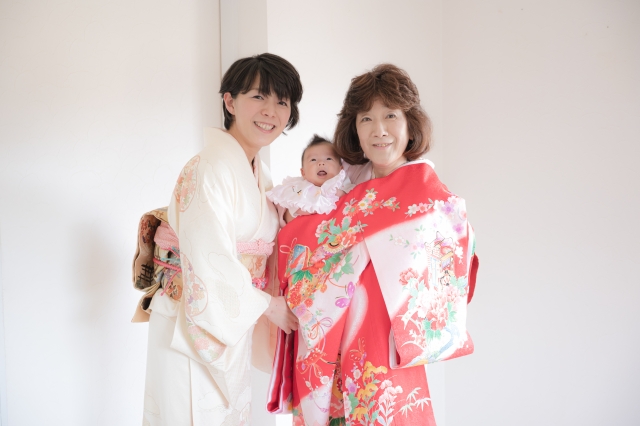
参考文献
- スタジオアリス, 「お宮参りの服装はどうする?赤ちゃん、ママパパ、祖父母まで全解説!」, https://www.studio-alice.co.jp/shortcut/omiyamairi/column/pillar02.html
- STUDIO ARC, 「お宮参りはいつ、どこへ? しきたりや服装マナーをご紹介」, https://www.arc-web.com/kids/howto/omiya/when-where/
- スタジオアリス, 「お宮参りの初穂料(お金)を包むのし袋や封筒の正しい書き方やマナーを解説」, https://www.studio-alice.co.jp/shortcut/omiyamairi/column/detail11.html
- スタジオアリス, 「お宮参りの当日の流れは?ご祈祷にかかる時間や事前準備をチェック」, https://www.studio-alice.co.jp/shortcut/omiyamairi/column/detail15.html
- 神社本庁, 「神社でのご祈願」, https://www.jinjahoncho.or.jp/omairi/gokigan/
【English Article】
A Complete Guide to Omiyamairi: Understanding the Traditions and Manners of a Newborn’s First Shrine Visit
As you gaze at the peaceful face of your newborn baby, you can’t help but wish for a future filled with health and happiness. “Omiyamairi” is a beautiful Japanese tradition that gives form to this heartfelt prayer. However, as you begin to prepare, you might find yourself flooded with questions: “When do we go? Where? What should we wear? What do we do?”
- More than just a report to the gods: The deep meaning behind Omiyamairi.
- Day 31 for boys, day 33 for girls? Traditional attire and timing, plus modern adaptations.
- From writing on the ceremonial envelope to the day’s schedule: Perfect etiquette for a memorable occasion.
The Heart of Omiyamairi: Gratitude for Birth and Prayers for the Future
Omiyamairi is more than just a ceremony. It is a vital life ritual to report the baby’s safe arrival to the local deity, the “Ubusunagami,” express gratitude, and ask for their divine protection and guidance for the child’s healthy growth. Historically, it also signified the end of the mother’s “imi” (mourning or purification) period, as childbirth was once considered a form of “kegare” (impurity).
Through this ritual, the baby is believed to be accepted as a member of the community, an “ujiko” (parishioner), by the deity. For the family, it is a significant opportunity to socially announce the arrival of a new member and to strengthen family bonds by praying together for the child’s well-being.
The Significance of Modern Omiyamairi While honoring ancient customs is wonderful, the meaning of Omiyamairi has evolved. The most important thing is the feeling of celebrating the baby’s birth and the family coming together to wish for their healthy growth.
What to Prepare? Customs for Attire and Timing
The first things that come to mind when preparing for Omiyamairi are likely “when to go” and “what to wear.” While there are traditional customs, the health of the baby and mother should always be the top priority.
Timing: Traditional Days and a Flexible Approach According to ancient custom, it is best for boys to visit the shrine on the 31st or 32nd day after birth, and for girls, on the 32nd or 33rd day. However, this is just a guideline. There is absolutely no need to force it during harsh summer heat or cold winter days, or if the mother and child are not in perfect health. Many families now choose to combine the Omiyamairi with the “Okuizome” (first meal ceremony) held around the 100th day after birth.
Attire: The Star of the Show and the Family’s Dress Code
- The Baby (Formal Attire): The traditional style is to place a lavish “iwai-gi” or “ubugi” (celebratory kimono) over an inner garment called a “shirohabutae.” For boys, the kimono often features patterns of hawks or helmets, symbolizing success and greatness. For girls, motifs like temari balls and flowers are common, representing beauty and good fortune. More recently, styles such as placing the iwai-gi over a baby dress, or simply wearing a baby dress, have become common.
- Mother and Grandmother: While the black “tomesode” kimono was once the standard, today, more subdued and elegant kimonos like the “homon-gi,” “tsukesage,” or “iromuji” are preferred. For Western-style clothing, a formal suit or dress is the mainstream choice. It’s best to choose an outfit that is less conspicuous than the baby’s and is convenient for nursing.
- Father and Grandfather: A formal suit is the general standard. A black suit with a white tie is basic, but a conservative dark-colored suit is also acceptable.
The key is to match the level of formality. If the baby is in a kimono, the family should also wear kimonos or formal Western attire. If the baby is in a baby dress, the family can match with suits and dresses. Creating a sense of unity as a family will make the commemorative photos even more special.
The Day’s Schedule and Essential Etiquette
To ensure the day goes smoothly, it’s important to understand the flow of the prayer ceremony and the etiquette surrounding the “Hatsuho-ryo” (ceremonial offering).
Booking the Prayer and the Hatsuho-ryo Most shrines offer Omiyamairi prayer services. It’s often necessary to book in advance, so it’s a good idea to check their website or call ahead. At that time, you can also confirm the amount for the “Hatsuho-ryo” offering.
- Average Cost: Generally between ¥5,000 and ¥10,000, though some shrines have a set fee.
- The Envelope (Noshi-bukuro): Use a special envelope with red and white “cho-musubi” (butterfly knot) mizuhiki cords.
- What to Write: On the top half, write “御初穂料” (O-hatsuho-ryo) or “御玉串料” (O-tamagushi-ryo). On the bottom half, write the baby’s full name with a brush pen.
- Inner Envelope: Write the amount in old-style kanji (e.g., 壱萬円 for 10,000 yen) on the front, and your address and the baby’s name on the back.
A Typical Schedule for the Day
- Arrival and Registration: Go to the shrine office (shamusho) to register and present the Hatsuho-ryo. Arriving about 10 minutes early is recommended.
- Purification: Before praying, cleanse your hands and mouth at the “temizuya” (purification font).
- The Prayer Ceremony: You will be guided to the main hall where a Shinto priest will recite a prayer (norito). This usually takes about 20-30 minutes.
- Commemorative Photos: After the prayer, take photos on the shrine grounds. Hiring a professional photographer can be a wonderful way to capture the memory.
- Celebratory Meal: The family gathers for a meal to celebrate the baby’s birth. Choose a location, such as a restaurant or home, that is comfortable for the new mother.
The Beginning of a New Family Story
Omiyamairi is not just a rite of passage. It is a loving event to thank the gods for the baby’s safe arrival and to pray for a future full of happiness. While knowing the traditions and manners is important, the greatest gift of all is for the family to gather around the baby with smiles, sharing the feeling of “Thank you for being born.”
By preparing well, you can make it a wonderful and unforgettable day for your family.
Analysis Point ①: More than just a report to the gods: The deep meaning behind Omiyamairi
The essence of Omiyamairi lies in forming a bond with the “Ubusunagami,” the guardian deity of the land where the baby was born. The Ubusunagami is considered the closest deity, watching over a person throughout their life from the moment they are born in that land. Omiyamairi is a formal greeting to this deity, saying, “A new life has been born in this land. Please watch over this child for all their days.” It is a ritual to be recognized as a member of the local community (ujiko). This signifies not only a prayer for health but also the baby’s first step as a social being. In the past, community ties were extremely strong, and being accepted as a member of the community was essential for survival. Remnants of this custom are still alive in the modern Omiyamairi.
Analysis Point ②: Day 31 for boys, day 33 for girls? Traditional attire and timing, plus modern adaptations
There are several theories as to why the traditional dates are the 31st day for boys and the 33rd for girls. In ancient times, the bleeding associated with childbirth was seen as a form of “impurity,” and this period was considered the time when this impurity was cleansed (the “imi” period). Furthermore, in an era of undeveloped medicine, surviving the first month of life was a major milestone, and it was at this point that a report was made to the gods.
Today, there is no need to adhere strictly to these dates. It is common to choose a day with good weather, a day that fits the family’s schedule, and most importantly, a day that prioritizes the health of the baby and mother. It has become increasingly popular to combine the Omiyamairi with the “Hyakunichi-iwai” or “Okuizome” (the 100th-day celebration), allowing for a grander celebration. Attire has also diversified, with options ranging from traditional celebratory kimonos to baby dresses and slightly formal rompers. The important thing is to choose clean, respectful clothing that shows reverence to the deity.
Analysis Point ③: From writing on the ceremonial envelope to the day’s schedule: Perfect etiquette for a memorable occasion
The ceremonial offering, “Hatsuho-ryo,” originates from the practice of offering the first rice harvest of the year (“hatsuho”) to the gods. Handing over cash as is is considered bad manners; it should always be placed in a “noshi-bukuro” (ceremonial envelope). The “mizuhiki” cord used should be a red and white “cho-musubi” (butterfly knot), which is used for happy occasions that one hopes will repeat. Be careful not to use a “musubi-kiri” (tie-off knot), which is for one-time celebrations like weddings.
The baby’s name written on the front of the envelope is to inform the deity that “this prayer is for this child.” It should be written neatly in easy-to-read block script. On the day of the ceremony, it is more polite to carry this envelope wrapped in a “fukusa” (a small silk cloth). When presenting it at the reception, saying a word of greeting and handing it over with both hands from the fukusa will make for a more heartfelt visit. These small points of etiquette show respect to the deity and make the family’s special day even more pleasant.
References
- Studio Alice, “Omiyamairi no Fukusou wa dousuru? Akachan, Mama Papa, Sofubo made Zensetsu Kaisetsu!” [What to Wear for Omiyamairi? A Complete Guide for Baby, Mom, Dad, and Grandparents!], https://www.studio-alice.co.jp/shortcut/omiyamairi/column/pillar02.html
- STUDIO ARC, “Omiyamairi wa itsu, doko e? Shikitari ya Fukusou Manner wo Goshoukai” [When and Where to Go for Omiyamairi? Introducing Customs and Dress Code Manners], https://www.arc-web.com/kids/howto/omiya/when-where/
- Studio Alice, “Omiyamairi no Hatsuho-ryo (Okane) wo Tsutsumu Noshi-bukuro ya Fuutou no Tadashii Kakikata ya Manner wo Kaisetsu” [A Guide to the Correct Way to Write on and Manners for Noshi Envelopes for Omiyamairi Offerings], https://www.studio-alice.co.jp/shortcut/omiyamairi/column/detail11.html
- Studio Alice, “Omiyamairi no Toujitsu no Nagare wa? Gokitou ni kakaru Jikan ya Jizen Junbi wo Check” [What is the Schedule for the Day of Omiyamairi? Check Prayer Times and Advance Preparations], https://www.studio-alice.co.jp/shortcut/omiyamairi/column/detail15.html
- Jinja Honcho (The Association of Shinto Shrines), “Jinja de no Gokigan” [Prayers at the Shrine], https://www.jinjahoncho.or.jp/omairi/gokigan/

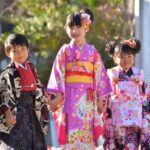
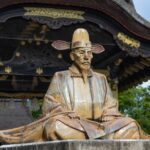

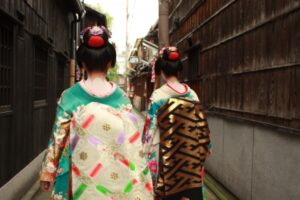

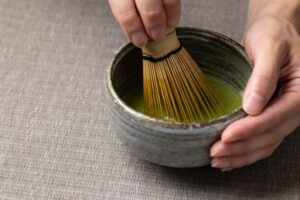
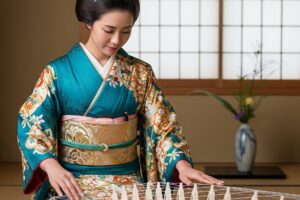
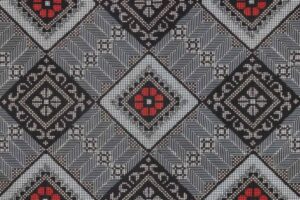
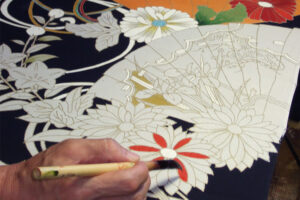
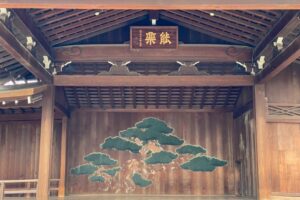
コメントを残す